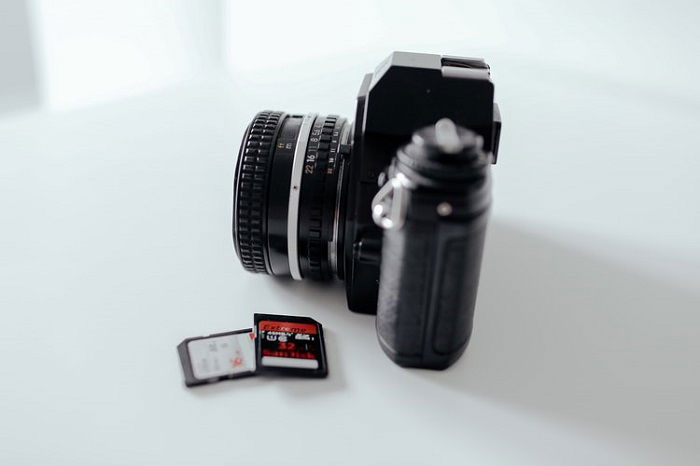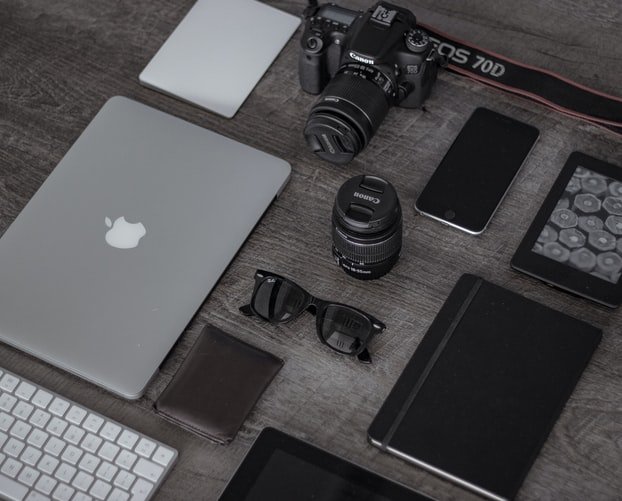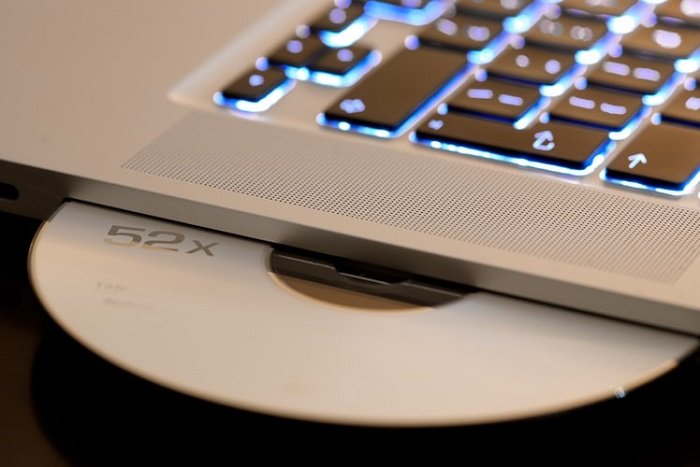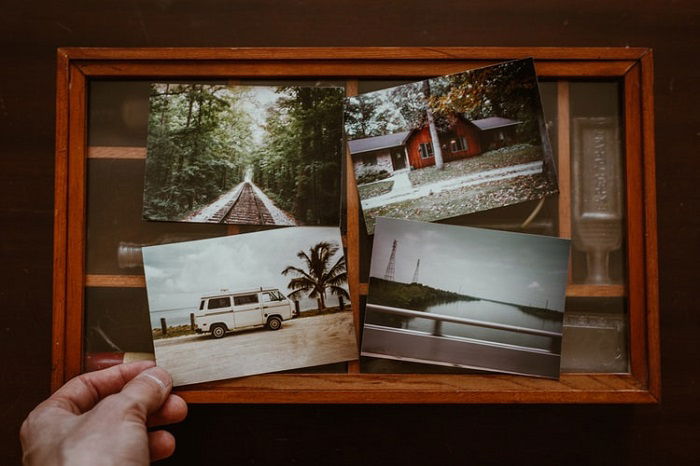That’s why there’s nothing worse than losing your photos. It’s a heartbreaking experience. And for professionals, losing photos can be costly. It could cost you a job or damage your reputation. But even for amateurs, it can be equally upsetting. That’s why storing your photos is so important. Even if you’re not a professional photographer, you should take a professional approach to photo storage. Thankfully, we have some solutions. We’ve created a list of the best ways to store your digital photos. [ExpertPhotography is supported by readers. Product links on ExpertPhotography are referral links. If you use one of these and buy something, we make a little bit of money. Need more info? See how it all works here.]
What Can Go Wrong When Using a Way To Store Photos?
Storing digital photos is quite different from storing 35mm photographs in a shoebox. There are more factors at play, and things can go wrong at any moment. Memory cards are small and easy to lose. Computers and phones can break at any moment. All it takes is one spilt cup of coffee, and your whole catalog of work is gone. You can’t be too careful when storing your photos.
The Best Way to Store Photos
Here’s our list of the best ways to store photos to avoid disaster.
1. Don’t Rely on Storing Images on Memory Cards
Memory card capacity is growing all the time. They can hold hundreds, if not thousands, of photos at one time. And many professional cameras have dual memory card slots. These developments mean you can store lots of photos on your camera. But keeping the shots on your memory card is bad practice. If you lose track of how many photos you have on your card, you may fill it up at an inconvenient moment. To capture new images, you might need to delete old ones. The biggest problem is the memory card itself. They may have a big capacity, but they are small. And small means easy to lose. That’s why it’s best to move the photos onto another device as soon as possible. Modern digital cameras make this easy. Many allow you to transfer files from the camera to another device using Bluetooth or Wi-Fi.
2. Store Your Photos on External Hard Drives
Once you have your photos on your computer, you may feel that they’re safe. But believe us, they’re not! Computers and laptops are great tools and essential to modern photography. But they’re fragile. They can suffer from physical damage, like dropping it or spilling something on it. Theft is also a concern. You can also encounter technical issues like viruses. If a computer develops a software problem, sometimes the only solution is to wipe the whole thing. That means your photos too. That’s why an external hard drive is just as important as your actual device. A hard drive can store thousands of image files and hours of video footage. As well as being one of the best ways to store photos, they are also great for archiving invoices and other documents. You plug it into your device using a USB cable and transfer the photos. Thus, your photos will be safely stored even if the worst happens to your computer.
3. Backup Your Photos on the Cloud
If you want to avoid filling your house with electronic devices, you can use online cloud services. A cloud storage system serves the same function as an external hard drive—only it’s online. No USB cables needed here! Cloud storage services are simple and easy to use. First, you copy the files from your device and move them to the cloud. Then, you can log in and access them from any device with an internet connection. Several cloud storage services offer free storage. Dropbox is excellent, but the storage capacity is limited to 2 GB. Google Drive is another great cloud storage service with 15 GB for free. There are also specific cloud photo services, such as Google Photos. It makes it easy to store and organize photos from all your mobile devices. If you want more photo storage, you’ll need to pay. Cloud storage services such as pCloud and Sync have different plans you can purchase. First, you need to find the right plan that suits your needs. Basic plans start with 200 GB, but some cloud services offer packages with unlimited storage.
4. Save Your Photos as Email Attachments
Email is a great way of staying connected and sending information electronically. But you can also use it to store photos and files. Create a draft email, attach the photos you want to store, and send the email. Only this time, you’re sending the email to yourself. If you have two email accounts, you can send them from one to the other. Once received, the attached photos are stored on your email server. You’ll be able to download them from any device. You can also create files and organize your emails so they don’t get lost or deleted accidentally. The problem with this system is that emails have a very limited capacity. You’ll only be able to attach a few photos to each email. If you want to store many photos in this way, you’ll be sending yourself a lot of emails. You can turn your photo folders into zip files to reduce their size. It will allow you to send more information in each email. But it’s still very limited.
5. Go Old School and Burn Your Photos to CD
Put the matches down. We’re sure burning files to CDs will be a hazy memory for you, too! But saving files on a CD or DVD is a great way to backup photos. You can transfer the files from your computer to a CD. And a single CD can store hundreds of photo files. It can be a bit time-consuming, but you can create a whole library of photos on a CD. It’ll also free up a lot of space on your hard drive. This storage system is far from perfect. You need to store the CDs carefully so they don’t get damaged. And they also take up space in your home or office. You also need to make sure you label everything correctly. All blank CDs look the same, so be sure to note which photos are on each CD. And, of course, you need to buy the CDs. It’s an additional cost you have to consider. Also, make sure your computer or laptop has a disk drive first!
6. Print Your Favorite Photos and Put Them on Display
The majority of photos taken on a digital camera or smartphone exist purely in the digital world. They are rarely printed into a physical photo. But printing images is a great way to store photos. Not only will you have a copy of the picture you can display, but you’ll also have a copy in case the digital file is lost. Your printed photos can be framed and displayed in your home. Or you can put it in a photo album. Either way, it will be safe and accessible. If you have a good quality printer, you can do this at home. Or you can take files to a photography shop and have them printed onto photography paper. But it’s not a solution for backing up your entire digital library. Whether you’re printing at home or in a shop, it will get expensive. You should only print the photos that are extra special to you.
Conclusion
There are many ways you can store your photos to keep them safe. And choosing the best way to store photos depends on what your needs are. We hope our list of the best ways to store photos has shown you how to eliminate the risk of losing your beloved library!











title: “Best Way To Store Photos In 2023 6 Photo Storage Tips " ShowToc: true date: “2023-01-28” author: “Alice Partee”
That’s why there’s nothing worse than losing your photos. It’s a heartbreaking experience. And for professionals, losing photos can be costly. It could cost you a job or damage your reputation. But even for amateurs, it can be equally upsetting. That’s why storing your photos is so important. Even if you’re not a professional photographer, you should take a professional approach to photo storage. Thankfully, we have some solutions. We’ve created a list of the best ways to store your digital photos. [ExpertPhotography is supported by readers. Product links on ExpertPhotography are referral links. If you use one of these and buy something, we make a little bit of money. Need more info? See how it all works here.]
What Can Go Wrong When Using a Way To Store Photos?
Storing digital photos is quite different from storing 35mm photographs in a shoebox. There are more factors at play, and things can go wrong at any moment. Memory cards are small and easy to lose. Computers and phones can break at any moment. All it takes is one spilt cup of coffee, and your whole catalog of work is gone. You can’t be too careful when storing your photos.
The Best Way to Store Photos
Here’s our list of the best ways to store photos to avoid disaster.
1. Don’t Rely on Storing Images on Memory Cards
Memory card capacity is growing all the time. They can hold hundreds, if not thousands, of photos at one time. And many professional cameras have dual memory card slots. These developments mean you can store lots of photos on your camera. But keeping the shots on your memory card is bad practice. If you lose track of how many photos you have on your card, you may fill it up at an inconvenient moment. To capture new images, you might need to delete old ones. The biggest problem is the memory card itself. They may have a big capacity, but they are small. And small means easy to lose. That’s why it’s best to move the photos onto another device as soon as possible. Modern digital cameras make this easy. Many allow you to transfer files from the camera to another device using Bluetooth or Wi-Fi.
2. Store Your Photos on External Hard Drives
Once you have your photos on your computer, you may feel that they’re safe. But believe us, they’re not! Computers and laptops are great tools and essential to modern photography. But they’re fragile. They can suffer from physical damage, like dropping it or spilling something on it. Theft is also a concern. You can also encounter technical issues like viruses. If a computer develops a software problem, sometimes the only solution is to wipe the whole thing. That means your photos too. That’s why an external hard drive is just as important as your actual device. A hard drive can store thousands of image files and hours of video footage. As well as being one of the best ways to store photos, they are also great for archiving invoices and other documents. You plug it into your device using a USB cable and transfer the photos. Thus, your photos will be safely stored even if the worst happens to your computer.
3. Backup Your Photos on the Cloud
If you want to avoid filling your house with electronic devices, you can use online cloud services. A cloud storage system serves the same function as an external hard drive—only it’s online. No USB cables needed here! Cloud storage services are simple and easy to use. First, you copy the files from your device and move them to the cloud. Then, you can log in and access them from any device with an internet connection. Several cloud storage services offer free storage. Dropbox is excellent, but the storage capacity is limited to 2 GB. Google Drive is another great cloud storage service with 15 GB for free. There are also specific cloud photo services, such as Google Photos. It makes it easy to store and organize photos from all your mobile devices. If you want more photo storage, you’ll need to pay. Cloud storage services such as pCloud and Sync have different plans you can purchase. First, you need to find the right plan that suits your needs. Basic plans start with 200 GB, but some cloud services offer packages with unlimited storage.
4. Save Your Photos as Email Attachments
Email is a great way of staying connected and sending information electronically. But you can also use it to store photos and files. Create a draft email, attach the photos you want to store, and send the email. Only this time, you’re sending the email to yourself. If you have two email accounts, you can send them from one to the other. Once received, the attached photos are stored on your email server. You’ll be able to download them from any device. You can also create files and organize your emails so they don’t get lost or deleted accidentally. The problem with this system is that emails have a very limited capacity. You’ll only be able to attach a few photos to each email. If you want to store many photos in this way, you’ll be sending yourself a lot of emails. You can turn your photo folders into zip files to reduce their size. It will allow you to send more information in each email. But it’s still very limited.
5. Go Old School and Burn Your Photos to CD
Put the matches down. We’re sure burning files to CDs will be a hazy memory for you, too! But saving files on a CD or DVD is a great way to backup photos. You can transfer the files from your computer to a CD. And a single CD can store hundreds of photo files. It can be a bit time-consuming, but you can create a whole library of photos on a CD. It’ll also free up a lot of space on your hard drive. This storage system is far from perfect. You need to store the CDs carefully so they don’t get damaged. And they also take up space in your home or office. You also need to make sure you label everything correctly. All blank CDs look the same, so be sure to note which photos are on each CD. And, of course, you need to buy the CDs. It’s an additional cost you have to consider. Also, make sure your computer or laptop has a disk drive first!
6. Print Your Favorite Photos and Put Them on Display
The majority of photos taken on a digital camera or smartphone exist purely in the digital world. They are rarely printed into a physical photo. But printing images is a great way to store photos. Not only will you have a copy of the picture you can display, but you’ll also have a copy in case the digital file is lost. Your printed photos can be framed and displayed in your home. Or you can put it in a photo album. Either way, it will be safe and accessible. If you have a good quality printer, you can do this at home. Or you can take files to a photography shop and have them printed onto photography paper. But it’s not a solution for backing up your entire digital library. Whether you’re printing at home or in a shop, it will get expensive. You should only print the photos that are extra special to you.
Conclusion
There are many ways you can store your photos to keep them safe. And choosing the best way to store photos depends on what your needs are. We hope our list of the best ways to store photos has shown you how to eliminate the risk of losing your beloved library!










